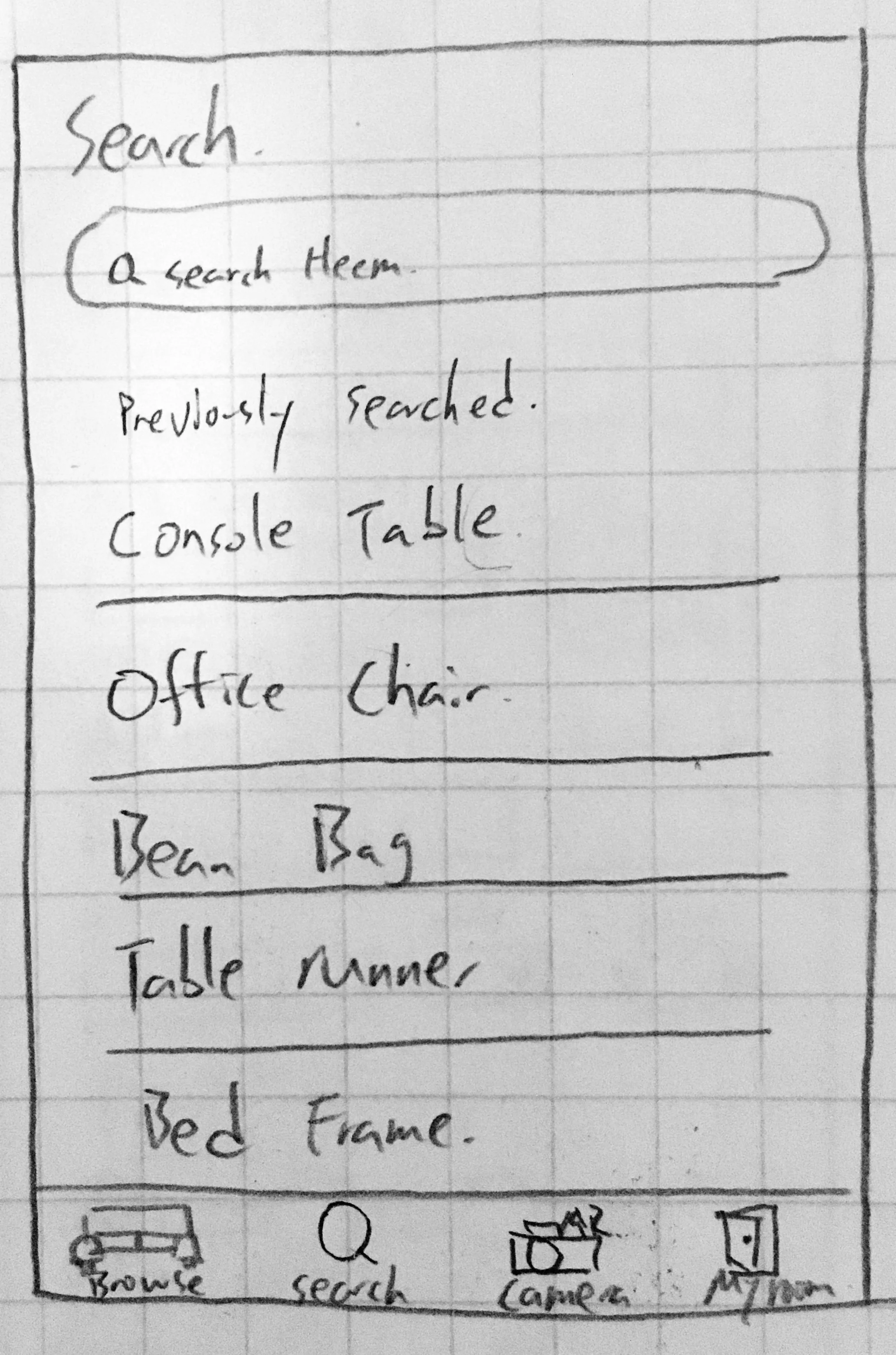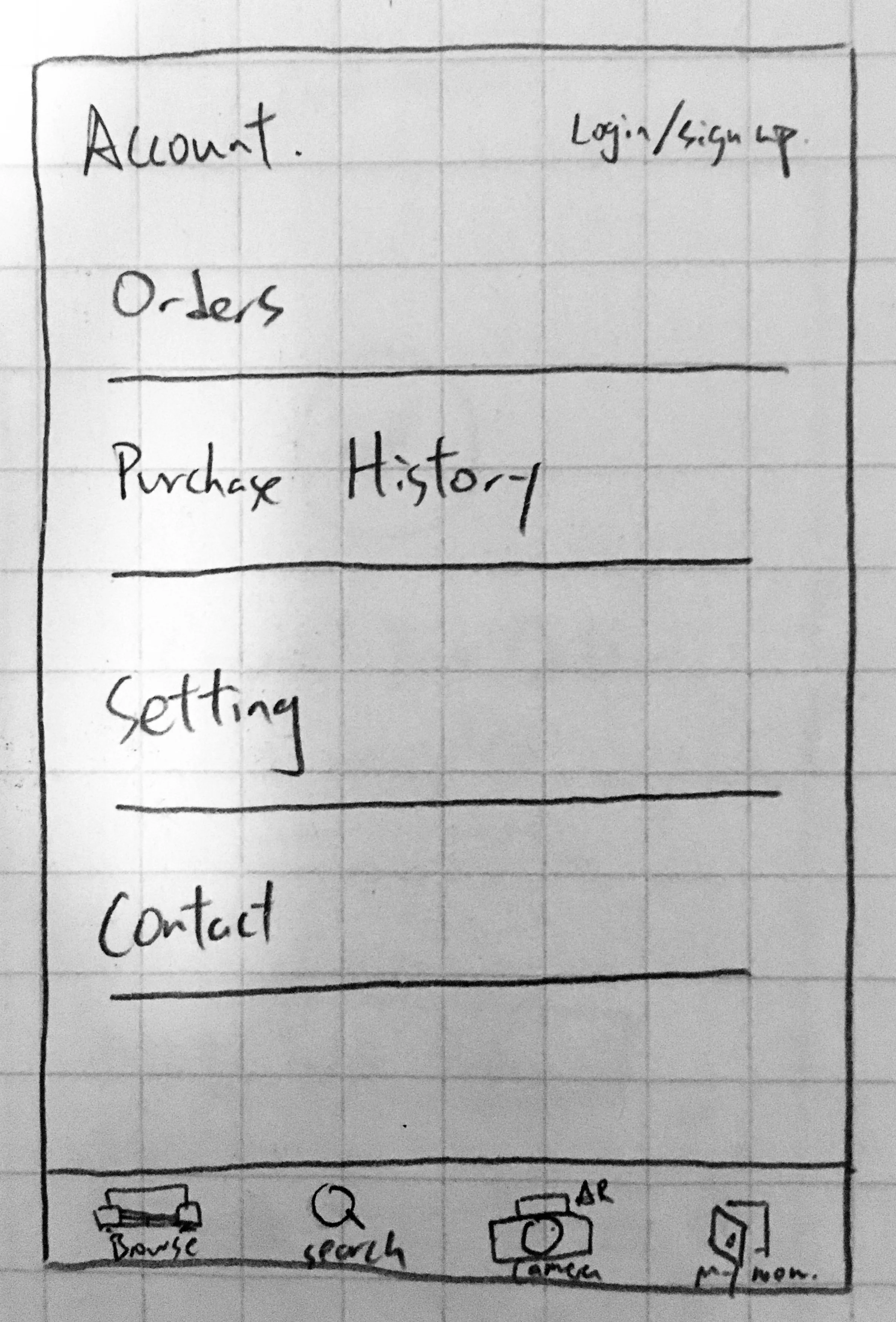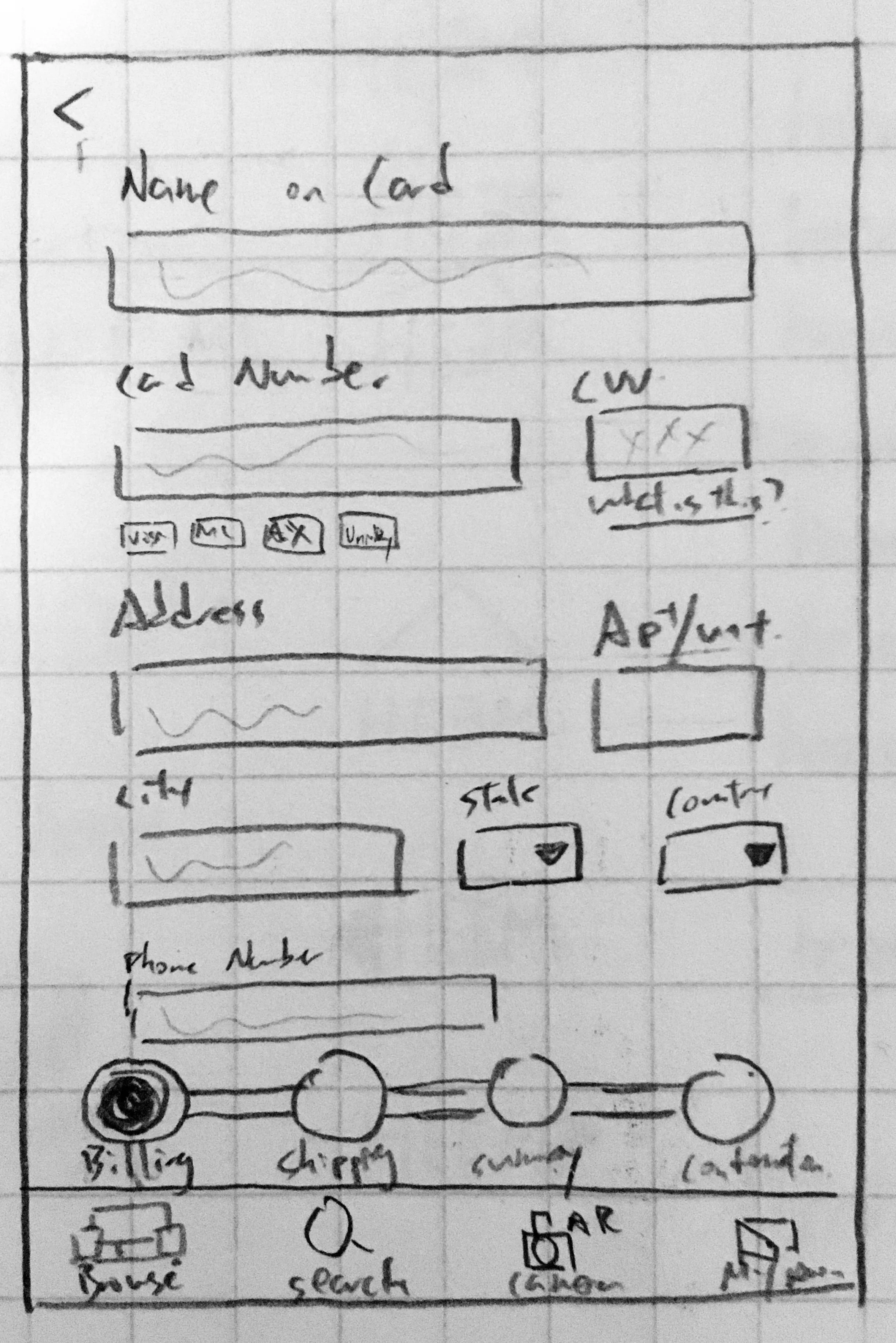OVERVIEW
HEEM is a new app for interior design. They have partnerships with a number of top-ten furniture stores in the US. HEEM is currently scanning all the catalog items from these stores, as well as setting up processes to keep catalogs updated. The goal of the app is to allow users to select any type of furniture and see it in augmented reality through their smartphone or tablet app, browse through the extensive catalog, and be able to purchase directly on the app.
ABOUT
Course: UX Academy
Role: UX/Product Designer, User Researcher
Key Activities: Primary research, secondary research, ideation, prototyping, usability testing, interaction design, interface design
Duration: 2 weeks
Tools Used: Sketch, Marvel, Photoshop
OBJECTIVES
- Create an app that has e-commerce and AR capabilities for a large collection of furniture from various brands
- Develop brand identity guideline and UI that fits the overall brand image
RESEARCH
To better understand the current Augmented Reality (AR) application on mobile devices and users' acceptance of the technology, preliminary primary research and secondary research were conducted.
Semi-Structured Interview
A semi-structured interviews conducted with five people that can be categorized as frequent online shoppers. This user group engages in online shopping 1 - 3 hours per week on average. My goal with this round of interviews was to discover a trend of furniture-shopping behavior and acceptance level to AR apps.
“...[AR] is cool for furniture shopping. But I would probably still measure out the space or the size of my furniture before I go [shopping]. I like to feel the furniture before I buy them.”
I gained three important insights from the interview process:
- People prefer to go to retail stores and feel the furniture before purchasing, especially for large furniture items
- Some users are not sure if the furniture in AR is true to scale
- The idea of using AR while shopping can be fun, engaging for users to interact with the product first-hand
Secondary Research
Key information found were as follows:
- Major AR furniture apps are: IKEA Place, Houzz, Amikasa
- IKEA Place is the current leader among the three due to high brand recognition and user-friendliness. However, it requires iOS 11 as it operates on iOS's new ARKit.
- Houzz although is the first-to-market with the app, it is not a true AR app. The app allows users to re-size the furniture. However, it can be misleading about the true dimension of the furniture.
Design Implications
By synthesizing data from primary and secondary research methods, I extracted three design implications. These helped guide and direct the ideation and prototyping phase.
- The AR feature would only be a part of an e-commerce app. As primary and secondary research showed, an app that offers both AR and purchasing capabilities will encourage conversions
- Most furniture shoppers know the category of furniture they are looking for. Shoppers have clear ideas of what to replace or what furniture is needed in a specific area. A browse section with easy categorization will help to navigate to the products
- To utilize AR, the application is required to scan the room. A function of rescanning room should be easily accessible if additional scanning is required.
IDEATION
The ideation process started with sketches of high-level screens. Based on research results, offering browsing and search functions is important users. This can help users locate the type of product they already have in mind. The research also suggests a low likelihood of impulse-buy in furniture-shopping, especially for large items. This implies a more careful decision-making process for potential customers. To help shorten this purchasing timeline, HEEM should be able to save pictures of products' arrangement in AR and the ability to add multiple pieces of furniture at a time.
Low-Fidelity Wireframes
TESTING
After some reiterations on the sketches, a high-fidelity prototype was built for usability testing. One of the challenging aspects of this capstone is to design for the iPhone X, due to its unconventional screen shape.
Usability testing was conducted in-person with Marvel's web prototype as the screens designed for iPhone X will not display correctly on other iPhones. The 5-minute test with five different users provided valuable feedbacks such as:
- The idea of "My Room" did not come across as the "wishlist", or things users would like to have in their room. Name changed to wishlist on future iterations
- Consider consolidating all camera functions (calibrate, center, and dimensions) under a secondary control setting
- The extra room next to the iPhone X notch can be utilized more fully with buttons
NEXT STEPS
The process of learning and designing for AR was entertaining and challenging. Working with a new technology and finding a good balance to apply it to a new mobile device with unconventional screen dimensions allowed me to rely on the research findings. These hurdles become jumping points for creative solutions. If this project is to continue, I would focus on two priorities:
- Continue to expand upon AR features within the camera. It can already have 2 or more pieces of furniture in the camera. But additional features such as professional's design for a similar room size or suggested types of furniture that pair well with the ones selected can all be explored to optimizing user's purchasing experience.
- Adding in an easier way to browse by incorporating filters and other means of categorizing furniture of different sizes and purposes, the users can find the desired products easier than ever.












